Rising with the No-Code Movement 🏄♂️| Makerpad
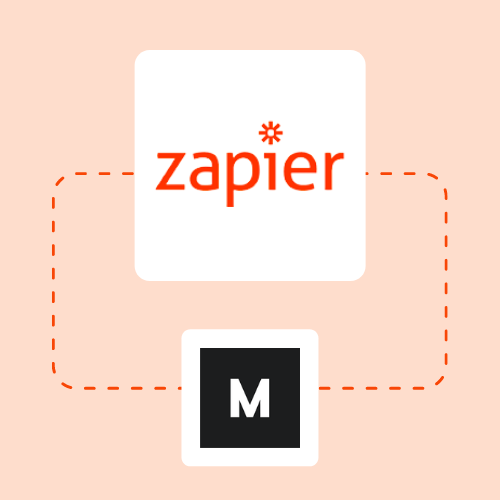
"Code or No-Code, figure out the path of least resistance and start building"
👆 That's Ben Tossell's advice for Indie Hackers
Ben is the Founder and CEO of Makerpad.
Makerpad is a content + community + course platform that teaches people how to build internet businesses without writing a single line of code.
Ben started Makerpad as a side project when he was a working at Earnest Capital (now calm company fund).
That was back in November 2018.
Before Earnest Capital, Ben was the community manager at Product Hunt.
During his time at PH he came across hundreds of new projects every week.
People were making side projects for fun and learning.
And even for money!
That's what pushed Ben to work on a side projects of his own.
During his time at Product Hunt, he came across the launches of No-Code products such as Carrd, Bubble and Webflow.
He realized, he could build side projects without writing code at all. He just needed to learn to use these No-Code tools.
That's when the idea for Makerpad was born.
Within the first year he was able to grow Makerpad to a $100,000 ARR business.
Eventually, in August 2019 Ben went full time on Makerpad, it was doing $200,000+ in ARR.
And earlier this year, in March 2021, Makerpad was acquired by the No-Code tool Zapier. It's ARR at the time was in excess of $400,000.
This is Makerpad's story👇
Makerpad - The Product⚒
Makerpad is the leading platform for no-code education, with a community of over 17,000 people spanning all stages of the no-code learning journey.
Ben's vision is to teach everyone, everywhere what can be done without needing to know how to code.
If you go on the Makerpad site you can find tutorials for specific use-cases such as designing an e-commerce store in Webflow or how to clone Uber using Bubble.
Some of these tutorials are free and some are behind a paywall. ($249 annual and $600 lifetime plan)
Makerpad also has featured cohort based courses such as No-Code Fundamentals and Automations at work. - The price for these range from $450 to $850.
The quality of the content and the community has allowed Ben to charge a premium for access.
But Makerpad wasn't always this high-profile content platform that it is today. It's rooted in humble beginnings.
Humble Beginnings🔰
Makerpad started as a side project for Ben.
He wanted to build apps but didn't know how to code. And he wasn't comfortable with spending 9 months learning how to code.
He didn't want to find a technical co-founder as well.
This is how he describes it -
"...there are two parts to it - which are finding a technical cofounder or you learn code and for me, I don’t want to spend nine months learning to code and then be able to make a shitty version of an app idea that I may have. When, I was having new ideas every week..."
Ben had new product ideas every week, they were mostly templated apps such as - AirBnB for X, or Uber for Y.
So he started to dabble in No-Code tools to build them out.
His products themselves didn't get much traction, but the videos and screencasts he put out building these apps generated a lot of interest from his audience.
That's when it struck him, that this could be the business itself.
He had left Product Hunt at the time, and hadn't joined Earnest Capital yet. He was thinking of starting something of his own.
That's when he launched his project newCo
newCo - The Makerpad V11️⃣
newCo was essentially the version 1 of Makerpad.
It was screencasts of Ben building No-Code versions of popular apps.
It had content that would help people build side projects without code. But it was as recurring revenue business with a monthly plan and a promise of a new tutorial ever week.
Ben wasn't comfortable with that.
He felt stressed out about producing tutorials every week, and felt "indebted" to his users to deliver value to them every month.
That's when he knew the project wasn't working for him.
He wanted to build things for the sake of building, and he wanted to build them whenever he wanted -
"...I don’t want to be on anyone else’s schedule. I want to be on my own. If I want to go off for two weeks, then I want to be able to do that..."
So he reinvented newCo as Makerpad.
The positioning of Makerpad is that once you pay the annual fee, you get access to the entire back catalog.
It's not the promise of future new content at a regular schedule.
The moment you pay, value has been delivered to you as a user. Everything after that is a bonus!
The Acquisition🤝
After 18 months of Ben working on the project full time, Makerpad got acqui-hired by Zapier.
And it all started with a Tweet.
Ben tweeted out that Airtable and Zapier were the top 2 tools used by Makerpad members were Airtable and Zapier.
To which entrepreneur Walter Chen replied that either one of them should buy Makerpad.
one of them should buy @makerpad asap
— Walter Chen (@smalter) September 15, 2020
Zapier's CEO Wade Foster saw that Tweet and got on a call with Ben, that eventually lead to the acquisition of Makerpad.
Zapier positions itself as the glue that binds all the No-Code tools together. You can automate workflows and connect different apps together to build functionality.
The acquisition means that Ben now reports to Wade, but he still gets to run Makerpad the way he wants to.
Airtable and Zapier are the top 2 startups leading the No-Code movement, and it will be interesting so see how things play out in this space in the long term.
Airtable recently acquired Bayes - a data visualization tool. It will help Airtable enhance it's own product offering.
The Zapier-Makerpad acquisition is part of a general trend of SaaS companies acquiring media companies, or more generally B2B companies acquiring B2C companies -
The primary motivation for all such acquisitions is to have direct access to customers' attention.
The No-Code Movement🔥
The No-Code movement is the democratization of software development.
It takes the powers of software way beyond the software developers and into the the hands of makers, designers and product managers.
No-Code is here to stay.
But Ben doesn't think that No-Code will ever replace Code.
Rather, they both live on the spectrum of software development.
The spectrum starts with No-Code, then moves to Low-code and eventually gets to Code.
No-Code is a great way to test out ideas quickly and build functional prototypes.
And if a project doesn't require complex processing, it can run entirely on a combination of No-Code tools.
Makerpad itself has a completely No-Code stack -
webflow, zapier, airtable, memberstack and my tears (happy and sad ones)
— Ben Tossell (@bentossell) September 30, 2021
There will always be certain projects that will be impossible to build using No-Code, that's where we will need coding expertise.
So there is no "battle" between Code and No-Code, rather it's the perfect separation of concerns -
- Idea validation, basic features and quick launch and iterations - No-Code
- Enhanced, complex features and more robust product - Code.
Advice for Indie Hackers🤗
Ben's advice to Indie Hackers is to focus on the path of least resistance for yourself. If you're more comfortable with code then go with that, if not, then go with No-Code.
But get started and build stuff -
"I think it’s to figure out what is the path of least resistance for them whether it’s code or no-code and I think that the things that the first thing you build will be crappy anyway."
And when you're starting, learn skills by building clones of the products you love -
"look at what is the site or the type of site you look already and how can you build the similar thing or 80% of that thing but for your own interest group. Just do that. It’s okay to like copy these things because that’s the best way you’re going to learn"
Lessons from Makerpad's story 👇
Insights📊
- You are the product of your environment, Ben was surrounded by new tech products all day, eventually became a builder because of that.
- High quality content sites and communities have great value. (learn to build a community from Rosie Sherry)
- The No code movement is in its early years of the hype cycle, it will stabilize with time and become an essential part of how startups are built.
- Early adopters in the No-Code space are people who do know how to code, and are aware of the pain of building development teams early on.
- Broadly 3 applications of No-Code tools - Websites, mobile apps, SaaS Apps.
- Often just repositioning an existing product can work well. Like Ben did with Makerpad and Nadav Keyson did with Riverside.
Ideas💡
- Coders - build dev-ops tools for No-Coders like Version Control and Integration Tests.
- Find your unique way of teaching No-Code, Ben built Makerpad. (Bram Kanstein teaches No-Code MVP, Tara reed runs Apps Without Code)
- Go Horizontal, become a catch-all No-Code expert and consult startups on how to get started. Or help indie makers build side projects. Michael Novotony built LeanSideProject and SideProjectStack
- Go Vertical, pick one No-Code tool you like, and go deep into it. Lachlan Kirkwood runs Build with Bubble
- Build a No-Code website builder for niche use cases. (MDX.ONE, Super.so and Potion.so are website builder on top of Notion, Carrd is single page landing page builder, Sheet2Site is a website builder on top of Google Sheets)
Inspiration🤩
- Know what works for you and focus your business on that. Ben gave up the monthly recurring model because he wasn't comfortable with it.
- Control your environment, join the right communities that get you take action. Ben was part of MakerHunt - an invite only slack community for Product Hunt makers
- Build side projects, they are great way to test ideas and see what sticks. Ben had multiple side projects before Makerpad.
Growth Channels📈
Total Traffic -
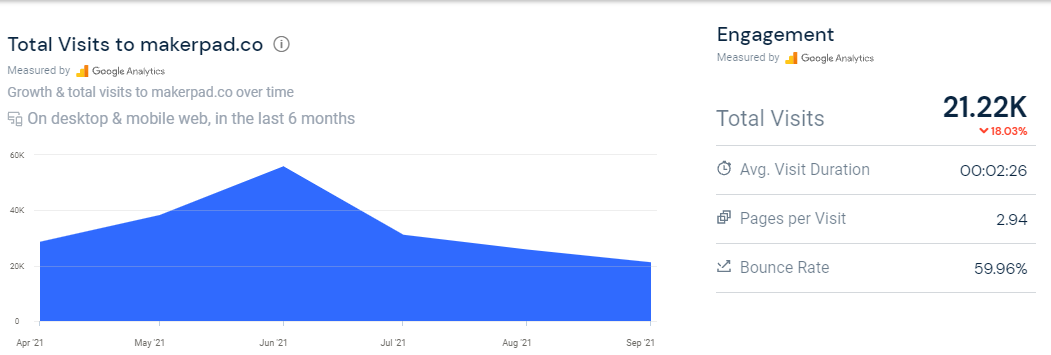
Primary Channels - Direct and Search
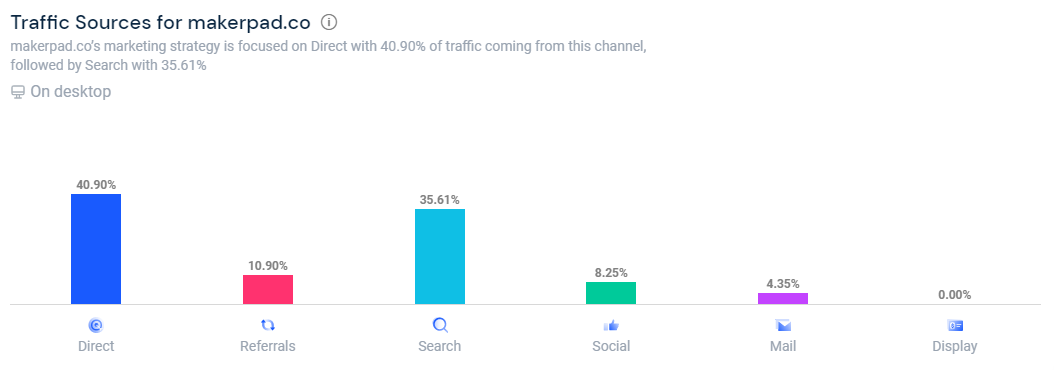
- Lot of direct traffic means their users are using the website everyday to access the content.
- All of its search traffic is organic, keywords that get them organic visits are their tutorials about using No-Code tools.
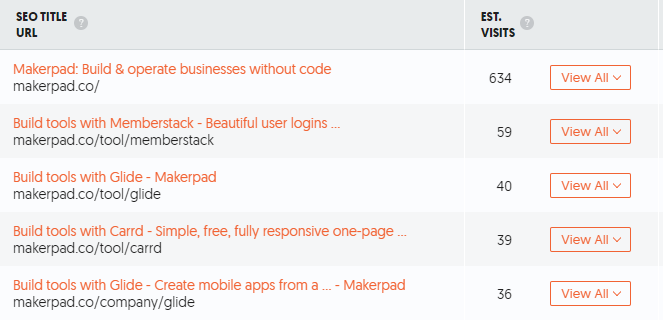
Top Social Channel - Twitter
- Ben is quite active on Twitter and the Makerpad Twitter account has more than 15,000 followers.

Related Trends📊
Google search trends for the term "no-code" -
- Absolute numbers are less, but rising.
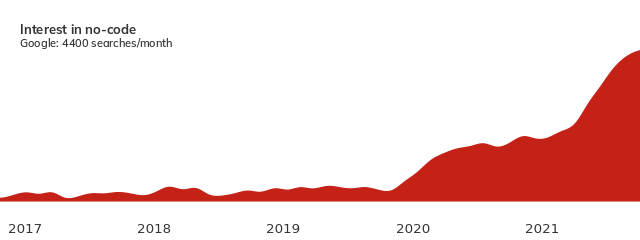
Related Opportunities💰
No-Code related acquisition opportunities on microacquire.com -
- Value Prop -No-Code e-learning platform and community with 340+ no-code devs.
- Users - 100-1000
- Key Assets - Website+ Newsletter (1300 subs)
- Revenue Last month - $3,000
- Profit Last month - $2,200
- ARR - $25K
- Asking Price - "Open to Offers"
- Value Prop - API and no-code tool to integrate waitlists on landing pages in less than 5 minutes. (Was #1 Product of the Day on Product Hunt)
- Users - 100-1000
- Key Assets - Website + Social Media Accounts
- Revenue Last month - 0
- Profit Last month - 0
- ARR - $2K
- Asking Price - $100K
- Value Prop - no-code tutorials platform that offers guides on how to use no-code tools to build a business.
- Users - 100-1000
- Key Assets - Website + Social Media Accounts
- Revenue Last month - 0
- Profit Last month - 0
- ARR - $50
- Asking Price - "Open to Offers"
Links🔗
- Creating a $200k Side Project Without Writing a Line of Code with Ben Tossell of Makerpad | IH Podcast
- Inside Zapier's First Acquisition with Ben Tossell of Makerpad | IH Podcast
- Code vs No-Code | Sahil Lavingia vs Ben Tossell | IH Podcast
- Trends VC #0033 - No-Code
- Trends VC #0055 - Low-Code
- We are joining Zapier | Makerpad Blog
- How to validate Startup Ideas without code | Bram Kanstein
Thank you for reading🙏
ICYMI : Last week I wrote about the podcasting platform Riverside -
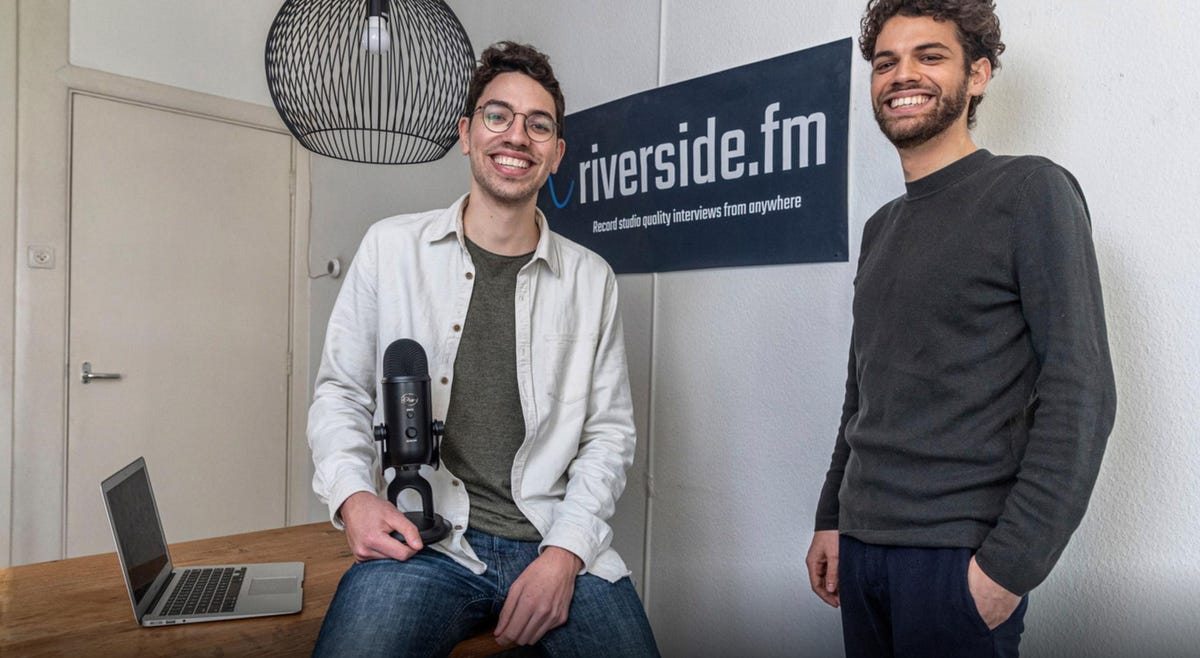
Every week, I share the most actionable insights and inspiring tips from successful Indie Hackers FOR aspiring Indie Hackers
Ideas + Insights + Inspiration for building profitable internet businesses💪
Sign up to Listen Up! IH and join 1400+ spirited Indie Hackers who read this newsletter every week.
Thanks to Seth King for editing this post
Google trends chart courtesy UnderTheRadar.io
Cheers,


